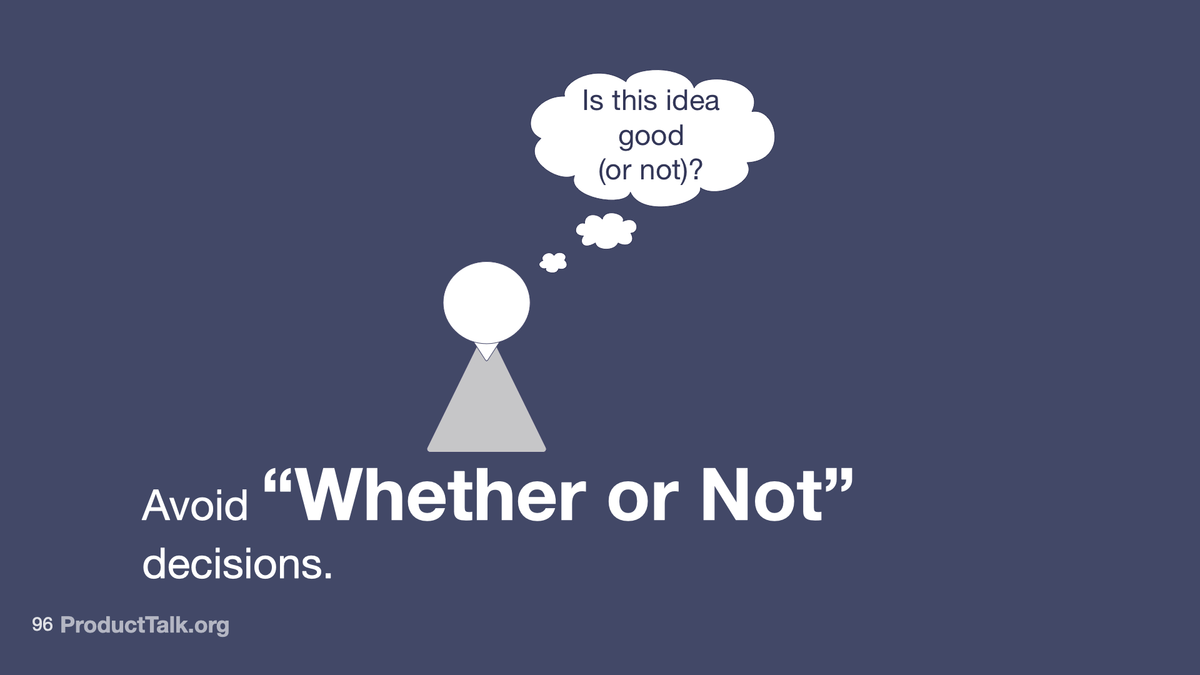Whether or Not Decisions

What are whether or not decisions?
Whether or not decisions ask "Is this idea good or not?" treating "good" as an absolute trait rather than a relative one.
Why are whether or not decisions problematic in product discovery?
These decisions are particularly problematic because they frame problems too narrowly. When you ask "Should we build this feature?" or "Is this idea good?" you're only considering a single option. This keeps you from considering the opportunity cost—all the other things you could be doing with that time and resources.
Whether or not decisions come up constantly in product work: Should we integrate this API? Should we redesign our emails? Should we build a mobile app? Each of these questions is really a whether or not decision in disguise. Answering yes to any of them means answering no to everything else you could be doing.
Whether or not decisions also make teams more susceptible to cognitive biases. When you're only considering one idea, you're more likely to:
- Fall in love with that idea (confirmation bias)
- Get more attached as you invest time in it (escalation of commitment)
- Miss feedback that contradicts your beliefs
What should you ask instead of whether or not questions?
Instead of asking whether or not questions, ask "What could we do to accomplish our goal?" This broadens your view of the problem and allows you to consider multiple possibilities.
When you consider multiple options, you set yourself up for a compare and contrast decision—"Which of these options looks best?"—which is much easier to answer because it treats "good" as the relative trait it actually is.
Learn more:
- Stop Asking 'Whether or Not' Questions
- How Compare and Contrast Decisions Lead to Better Product Outcomes
Related terms:
- Compare and Contrast Decisions
- Confirmation Bias
- Decision-Making
- Opportunity Solution Tree
Last Updated: October 25, 2025
